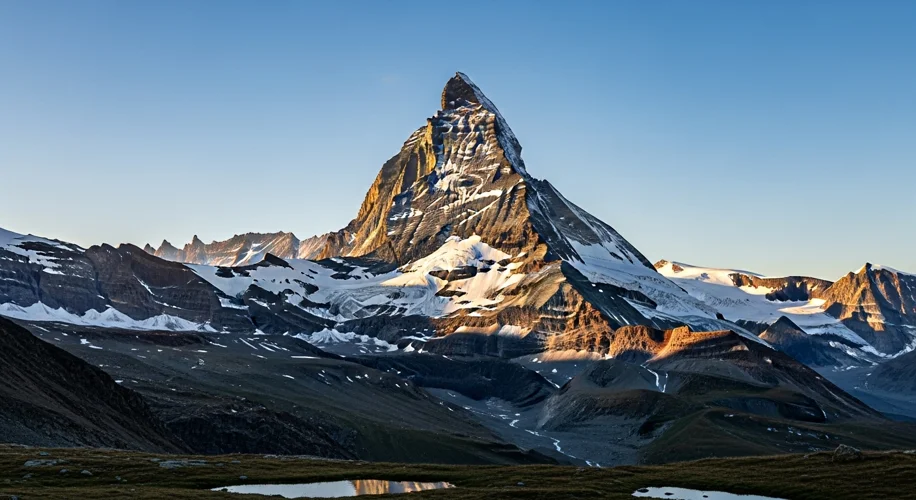The Matterhorn. Its iconic pyramid shape piercing the Swiss sky is instantly recognizable. But beyond its breathtaking beauty, this majestic peak offers a stark, visual lesson about our changing climate.
As a climate scientist, I often look to the natural world for clear indicators of what’s happening to our planet. Mountains, with their sensitive ecosystems, are particularly vulnerable. The Matterhorn, while seemingly immutable, is telling us a story about the broader impacts of climate change.
One of the most visible changes is happening to the snowpack. We’re seeing reduced snow accumulation and earlier snowmelt. This isn’t just about fewer pristine slopes for skiers; it has profound effects. Less snowpack means less water stored in these mountains, impacting rivers and ecosystems downstream throughout the year. Think of it like a bank account for water – and that account is being depleted faster.
Then there’s the glacial retreat. Glaciers are the frozen rivers of the mountains, and they are shrinking at an alarming rate. These aren’t just massive blocks of ice; they are vital habitats for specialized species and they sculpt the very landscape we admire. As they recede, they reveal older rock and soil, changing the terrain and the conditions for life.
We’re also observing altered weather patterns. Mountain regions are experiencing more extreme events – intense rainfall, stronger winds, and shifts in temperature. This instability makes it harder for the flora and fauna adapted to specific conditions to survive. Delicate alpine flowers, for example, might bloom too early, only to be hit by a late frost. The intricate web of life in these high-altitude environments is being disrupted.
These changes affect biodiversity. Species that rely on cold environments are being squeezed out or forced to move to higher, often smaller, areas. The unique plants and animals that call the Alps home are facing unprecedented challenges.
And it’s not just about the wildlife. Human communities that have long depended on these mountain ecosystems are also impacted. Traditional livelihoods, tourism, and the very availability of clean water are all linked to the health of these mountain environments. The subtle shifts in temperature and precipitation can have very real economic and social consequences.
The Matterhorn, in its grandeur, stands as a powerful symbol. It reminds us that climate change isn’t a distant threat; it’s a present reality shaping even the most iconic landscapes on Earth.
What can we do? Understanding these impacts is the first step. Supporting policies that promote sustainable practices, reducing our own carbon footprints, and advocating for climate action are crucial. Even small changes in our daily lives, when multiplied, can contribute to preserving these magnificent places for generations to come.

